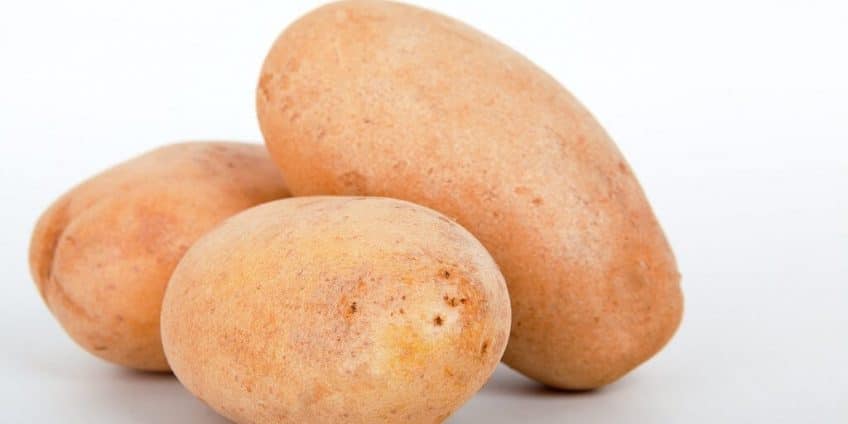Scroll to Recipes with Potato / आलू as ingredient
Potato is a native American root vegetable. It is a perennial plant in the family Solanaceae. Wild species of potato originated in Peru and can also be found in America.
There are close to 4,000 varieties of potato, including standard commercial type. Around 80 varieties are commercially available in the UK.
According to 2018 reports, the world production of potatoes was 368 million tonnes, led by China with 27%. India follows this figure with 48.5 million tonnes.
Commonly Known as
| Language | Name | Written as |
|---|---|---|
| Arabic | al-batatta | البطاطا |
| Bengali | alu | আলু |
| Gujarati | bataka | બટાકા |
| Hindi | aloo | आलू |
| Kannada | alugadde | ಆಲೂಗಡ್ಡೆ |
| Malayalam | urulakkizhang | ഉരുളക്കിഴങ്ങ് |
| Marathi | batata | बटाटा |
| Punjabi | aalu | ਆਲੂ |
| Tamil | urulaikilanguch sedi | உருளைக்கிழங்குச் செடி |
| Telugu | bangaladumpa | బంగాళదుంప |
| Urdu | aloo | آلو |
Nutritional Profile of Potato
Nutritional profile per 100 gms
- Calories: 77
- Protein: 2g
- Carbohydrate: 17g
- Fiber: 2.2g
- Fat: 100mg
- Sodium: 6mg
- Potassium: 421mg
Source: USDA & Google
Benefits
Anti-Oxidants
Anti-oxidants are compounds that reduce oxidative stress and improve chronic health. Components in potatoes like flavonoids, carotenoids, and phenolic acids act as antioxidants. They neutralize potentially harmful molecules known as free radicals. Thus it reduces the risk of chronic diseases like heart disease, diabetes, and cancer.
Source: ncbi.nlm.nih.gov
May Help in Sugar Control
There is a select type of starch found in potatoes called resistant starch. This starch helps with insulin resistance. It can help improve blood sugar control.
Source: ncbi.nlm.nih.gov
Improve Digestion
Resistant starch from potatoes is mostly converted into the short-chain fatty acid butyrate. It has been associated with reducing inflammation in the colon. It also lowers the risk of colorectal cancer.
Source: ncbi.nlm.nih.gov
It is Naturally Gluten-Free
Since a gluten-free diet is on the hype nowadays, it will be beneficial to add potatoes to the list. People with celiac disease or non-celiac gluten sensitivity can experience severe discomfort when consuming foods that contain gluten. For those people, potatoes are a great option.
Source: ncbi.nlm.nih.gov
Extremely Versatile and Filling
Potatoes are among the most filling foods as per studies. Besides, they are incredibly versatile and easy to add to your diet. You can boil, cook, roast it. And can even bake and steam it to eat.
Source: ncbi.nlm.nih.gov
Side Effects
It is relatively safe to eat potatoes. However, some people may have an allergy. Potatoes contain a class of toxic phytonutrients known as glycoalkaloids, which have reported glycoalkaloid poisoning. It has symptoms like headaches, stomach pain, diarrhea, nausea, and vomiting. Hence, potatoes can be toxic to you.
Source: ncbi.nlm.nih.gov
Frequently Asked Questions
How can we cook potatoes?
There are several ways to cook a potato. You can boil it, steam it and cook it with or without skin. One can use Potato as a main dish or side dish. You can use it as the main course, snacks, or even in salads. Moreover, one can deep-fry the slices of the potato.
From where the potatoes are original?
Potatoes are initially from modern-day Peru. And it is still cultivated in America.
What is the nutritional value of potato?
Potatoes are rich sources of starch, vitamins, minerals, and dietary fiber. They contain very little fat and almost no calories.

